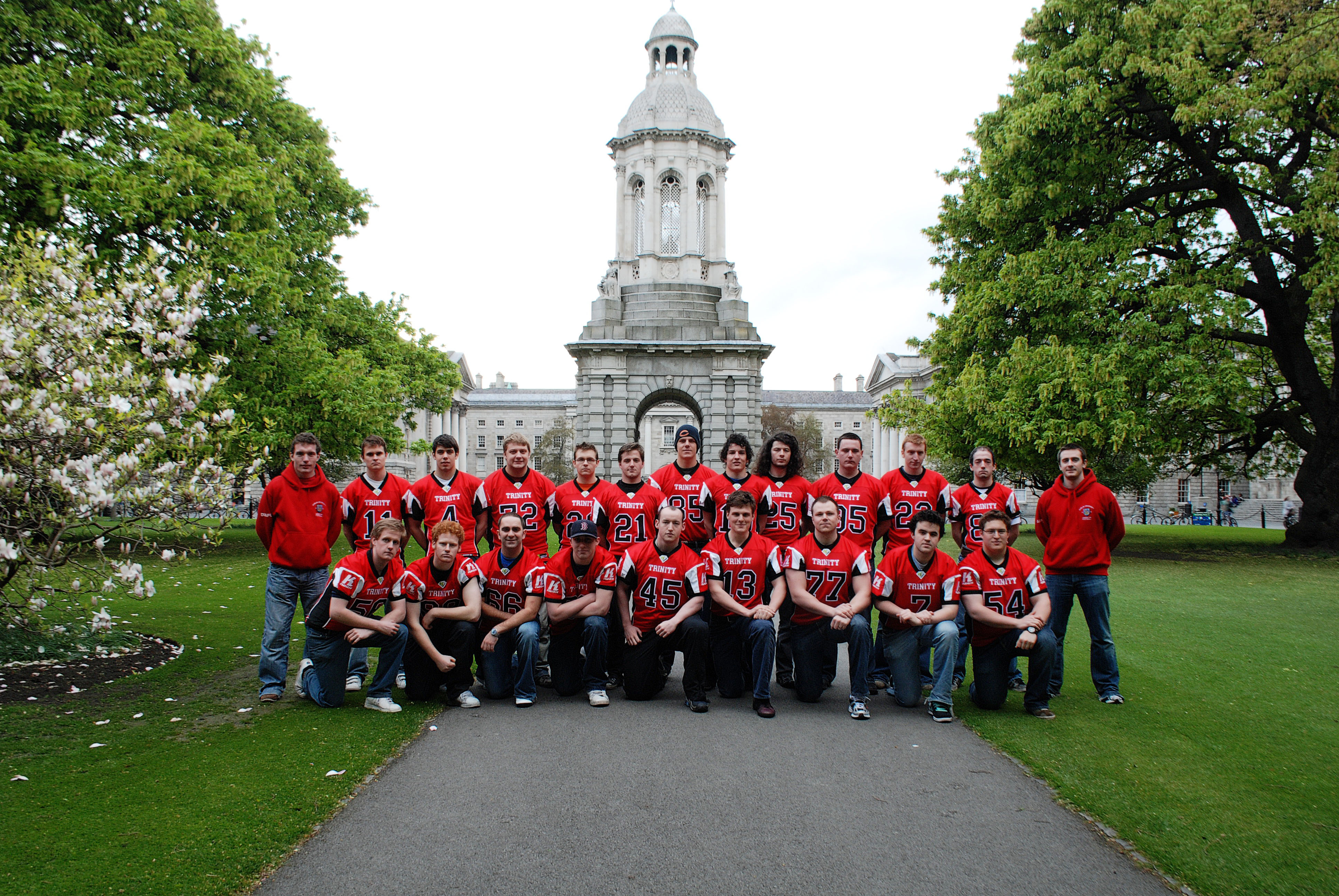
Association
The IAFA (Irish American Football Association) is the body that governs American Football in Ireland. Recognised by the Irish Sports Council, the IAFA created the IAFL (Irish American Football League) in 1984 and it has grown steadily since its inception. There are three collegiate teams currently participating: Trinity, UCD and UL with DIT set to join next year.
The most obvious comparison to make is to connect American football to rugby. David Lunn notes that both sports “have many positions requiring different body types and skills.” As the vast majority of college players in Ireland play the sport for the first time as students, skills learned through rugby can be a significant advantage. Conor Whelan said that a number of skills are highly transferable from rugby including “strength, speed, agility, athleticism and sheer brutality.” American football certainly has the chance to grow faster as a college sport in Ireland given the widespread popularity of rugby. Although, it must be noted that many rugby players decline to play American football in college due to fear of injury. Whelan emphasised that “dedication to other sports” could hinder growth. Logically, rugby takes precedence for students as they’ve invested more hours. Lunn believes that the fact that American football “has to compete with rugby, GAA, and soccer” makes it difficult particularly because it “isn’t played in schools.”
Developing players
However, it doesn’t take a particularly long time for beginners to reach a competent level. Whelan believes it takes about “three or four months to properly develop.” This is a remarkably short period of time, particularly for such a tactically demanding sport. Although, Lunn asserts that certain positions such as offensive line and defensive line take longer to learn due to certain rules and “subtle techniques”. Whelan stresses that “you have to learn to read the game” by studying the playbook to see meaningful improvement. It would be extremely difficult to successfully pick up something like soccer or hurling in such a small time frame which gives American football an advantage over other pursuits for newcomers. For example, Ezekiel Ansah, a highly rated professional football player in the NFL, began playing for the first time in college, something unheard of in most professional sports. The variety of positions, each with their own specific set of skills allows players to effectively maximise their individual talents and assets. Lunn emphasises the fact that in American Football “you have to learn to do one or two things really well” as the positions require specific skills, ultimately giving the player “a real identity” and an advanced appreciation of the position they play.
Support
American football is not a massively popular spectator sport in Ireland at the moment and this can be attributed to a number of factors. As a significant portion of the matches take place during the graveyard hours of the morning, it’s often not feasible to actually watch matches regularly. Stylistically, the presentation is anomalous for European viewers, from gung ho, overly brash commentators to jarring, overt advertising. (Even the coin toss at the beginning of the game is typically sponsored by some American multinational). The frequent intermittent stoppages can be grating and seemingly arbitrary to a new-comer. Indeed, we frequently hear the complaint that American football is too drawn out. Typical match length is over three hours long yet the ball is only in play for 11 minutes on average. And yet, those who watch the sport religiously embrace these annoyances as endearing quirks, which contribute to the sport’s unique status. A larger audience would certainly create more interest in American football at all levels, including collegiate.
One of the largest obstacles to American football breaking into mainstream sporting culture is its reputation as a niche sport. O Fearghail said that hopefully with increased interest, American football could be “viewed as a viable option to play rather than the kind of novelty choice it is now”. Many view it as a kind of “alternative” sport, similar to something like Ultimate Frisbee, a great number of students aren’t aware that Trinity even has an American Football team. Although it currently lags behind major Irish sports on campus there is cause for optimism. Whelan emphasised “Derry and DIT starting up this year” and “the revival of the Irish team” as encouraging signs which demonstrate that the popularity of this sport can only rise.
Lunn is equally optimistic, mainly due to the attitude of his teammates. He stresses that they “do a great job in introducing new players” and “passing on their passion for the game”. Due to a culture of active and passionate promotion of the team, the team’s popularity will continue to rise. Or as Lunn says, “I think that the future is in the hands of the students and for that reason the future is bright”.
Photo: Dublin University American Football Club






